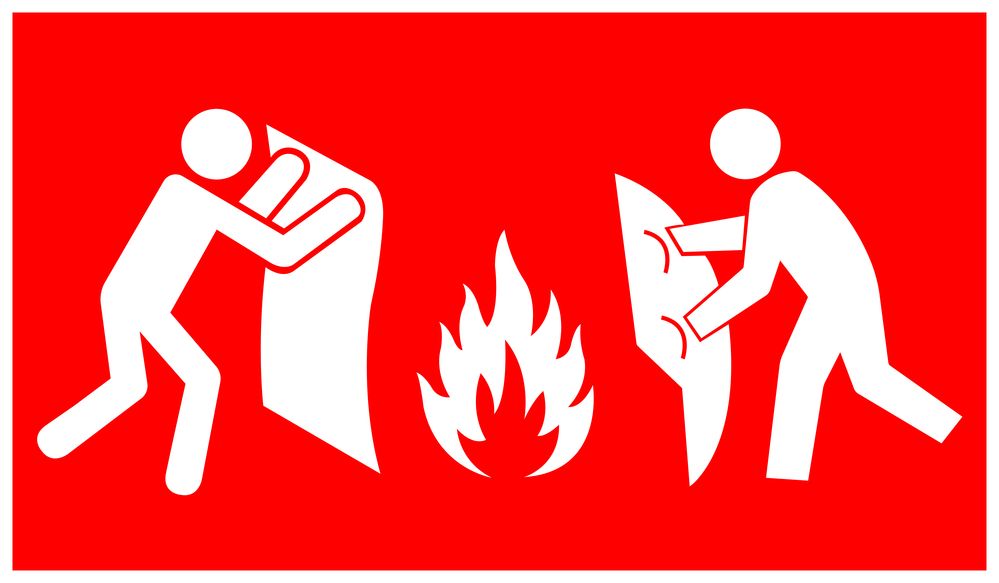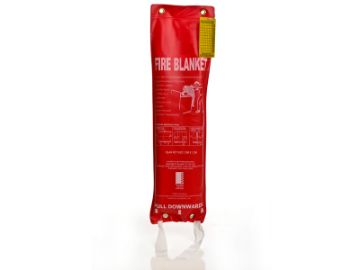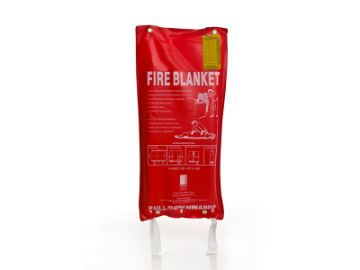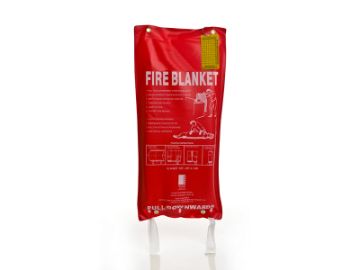

Fire blankets are an essential tool for every home, especially in the kitchen where small fires are most likely to occur. Designed to extinguish fires by cutting off the oxygen supply, they are particularly effective on cooking oil fires and fires involving clothing or small electrical appliances.
Here’s a comprehensive guide on how to correctly use a fire blanket in an emergency.
1. Recognise When to Use a Fire Blanket
Fire blankets are best suited for small, contained fires such as grease fires on a stovetop or flames from a malfunctioning electrical appliance. They are also effective in extinguishing fires on a person’s clothing.
Here is a list of fire types that are suitable for extinguishing with a fire blanket:
- Grease Fires (Class F/K Fires): Common in kitchens, grease or cooking oil fires can spread quickly if not contained. A fire blanket is highly effective at smothering these fires by cutting off the oxygen supply.
- Small Electrical Fires (Class E Fires): Fires caused by electrical appliances can be extinguished with a fire blanket, provided the appliance is unplugged or switched off before using the blanket.
- Clothing Fires: Fire blankets are ideal for extinguishing fires on a person's clothing, such as when someone's clothing catches fire while cooking or near an open flame.
- Small Contained Fires: This includes small fires in bins, wastepaper baskets, or other confined spaces where the fire can be covered and suffocated with a blanket.
- Pan Fires: Similar to grease fires, fires caused by overheated oil in pans or deep fryers are effectively handled with a fire blanket.
- Campfires: Small campfires that need to be extinguished quickly can be smothered with a fire blanket, provided they are contained and manageable.
However, if a fire is growing rapidly or spreading beyond control, a fire blanket may not be sufficient. In such cases, evacuate the area immediately and call emergency services.
2. Turn Off Heat Sources
If the fire is in your kitchen or involves an electrical appliance, and if it’s safe to do so, quickly switch off the source of heat. This helps prevent the fire from reigniting once you have successfully extinguished it with the fire blanket.
3. Retrieve the Fire Blanket
Fire blankets are typically stored in a red pouch marked with two tabs at the bottom. To release the blanket, simply pull on these tabs. The blanket should come out easily, ready for use.
4. Protect Your Hands
Before approaching the fire, make sure to protect your hands from the heat. Fold the edge of the blanket back over your hands, creating a protective layer between your skin and the fire. This also gives you better control over the blanket, allowing you to approach the flames with more confidence.
5. Carefully Cover the Fire
Once you’ve protected your hands, slowly and carefully approach the fire. Do not throw the blanket; instead, lay it gently over the fire, ensuring that the flames are completely covered. This is crucial because the blanket needs to fully block the fire’s oxygen supply in order to extinguish it.
If you are dealing with a fire on a person’s clothing, wrap the blanket around them, making sure to cover the flames and smother them. Encourage the person to stop, drop, and roll while you cover them with the blanket.
6. Leave the Blanket in Place
After covering the fire, leave the fire blanket in place for at least 30 minutes. This ensures that the fire is fully extinguished and cannot reignite. Resist the urge to lift the blanket too soon, as this could introduce oxygen back to the fire, causing it to flare up again.
7. Call for Assistance if Needed
Even if the fire appears to be out, it’s always a good idea to call the fire brigade to ensure the area is safe. If the fire continues despite your efforts, evacuate immediately and contact emergency services.
8. Dispose of the Fire Blanket
Fire blankets are single-use items and should be disposed of after use. Once a fire blanket has been deployed to extinguish a fire, its material may be compromised, making it unsuitable for future use. Replace the fire blanket as soon as possible to ensure you have one available for any future emergencies.
Fire Blankets in the Home: Essential Safety
Fire blankets are a vital addition to your home’s safety kit, especially for areas prone to small fires such as the kitchen or laundry. Make sure to keep your fire blanket in an easily accessible location, and ensure that all members of your household know how to use it properly.
Looking to enhance your fire safety at home or in the workplace? Fullworks Fire Safety provides high-quality fire blankets and other essential fire safety equipment to help protect you in emergencies. Explore our range of fire blankets and ensure you’re prepared for the unexpected. Visit our website or contact us today to find the right fire safety solutions for your needs.







